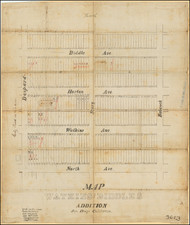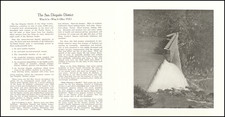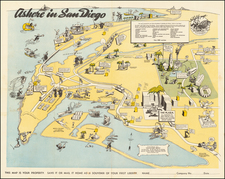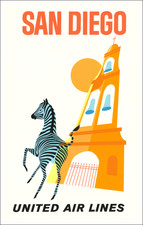San Diego's British Consul As Real Estate Developer / Speculator
Rare early subdivision map of the Winchester Tract in the El Cajon Valley, surveyed by H.R. Patrick, Civil Engineer and blue printed by Harris & Sproul.
The land in question was most likely the land which had been previously owned by San Diego's British Vice Consul Joseph Henry Winchester during the 1880s in San Diego, who had a 250 acre farm in the El Cajon Valley in the mid 1880s and was a business partner of John H. Ferry (San Diego County Recorder). Ferry and Winchester were promoting ten acre olive land near Lakeside as late as 1891 in the San Francisco Examiner of July 29, 1891.
Lew B. Harris (who resided at the corner of Third and Ash) and W.E. Sproul (who resided in West Fallbrook) had offices in the Pierce-Morse Building in 1887 and 1888.
Blueprint & Blue Line maps (Cyanotype Printing)
Blueprint and blue line maps were among the most popular means for the swift printing of maps for which there would be a limited demand. A blueprint or blue line map could be made and/or revised much more quickly than a lithograph, cerograph, or other printing method, and at a much lower cost.
This method of printing was invented in 1842 by John Herschel, a chemist, astronomer, and photographer. A cyanotype process, one starts by drawing on semi-transparent paper, weighted down by a top sheet of paper. The paper would be coated with a photosensitive chemical mixture of potassium ferricyanogen and ferric ammonium citrate. The paper would then be exposed to light, wherein the exposed portions turned blue and the drawn lines, protected from exposure, would remain white.
The cyanotype printing process was an improvement on the expensive and time-consuming method of hand-tracing original documents. The technique was particularly popular with architects; by the 1890s, a blueprint was one-tenth the cost of a hand-traced reproduction. It could also be copied more quickly.
Blueprint and blue line maps began to appear as early as the 1850s and 1860s, but they really began to become the standard for mining and similar limited-purpose maps by the 1880s. The ability to create these maps quickly and at a low cost made them the standard for short-run prints, ideal for mapping mining regions in the West and for similar purposes.
The method still exists today, but in a very limited fashion. In the 1940s, diazo prints (whiteprints or bluelines) became more popular, as they were easier to read and faster to make. The blue lines on a white background of these prints are now what most people call blueprints.









![[ West Mission Valley / University of San Diego / Midway / Sports Arena ] Map Showing the subdivisions in the partition suit of Steele vs. Steele, No. 5620 in the Superior Court. County of San Diego. And the allotment as made by the Referees, Surveyed by O. N. Sanford C.E. . . . Nov 1891.
Nov. 1891](https://storage.googleapis.com/raremaps/img/small/96483.jpg)




![Partition of Rancho Mission of San Diego San Diego, California -- Made under Decree of Superior Court dated January 7th, 1885, By Chas. J. Fox, C.E, O.H. Borden, M.C. Woodson ] Referees. Filed January 14th 1886. J.M. Dodge, Clerk.](https://storage.googleapis.com/raremaps/img/small/101388.jpg)